This Filipino Pandesal recipe is easy to follow and makes a classic light, fluffy, airy bread that is popular in the Philippines. This traditional Filipino bread is commonly eaten for breakfast or as a snack, but you can also enjoy it for lunch and dinner!
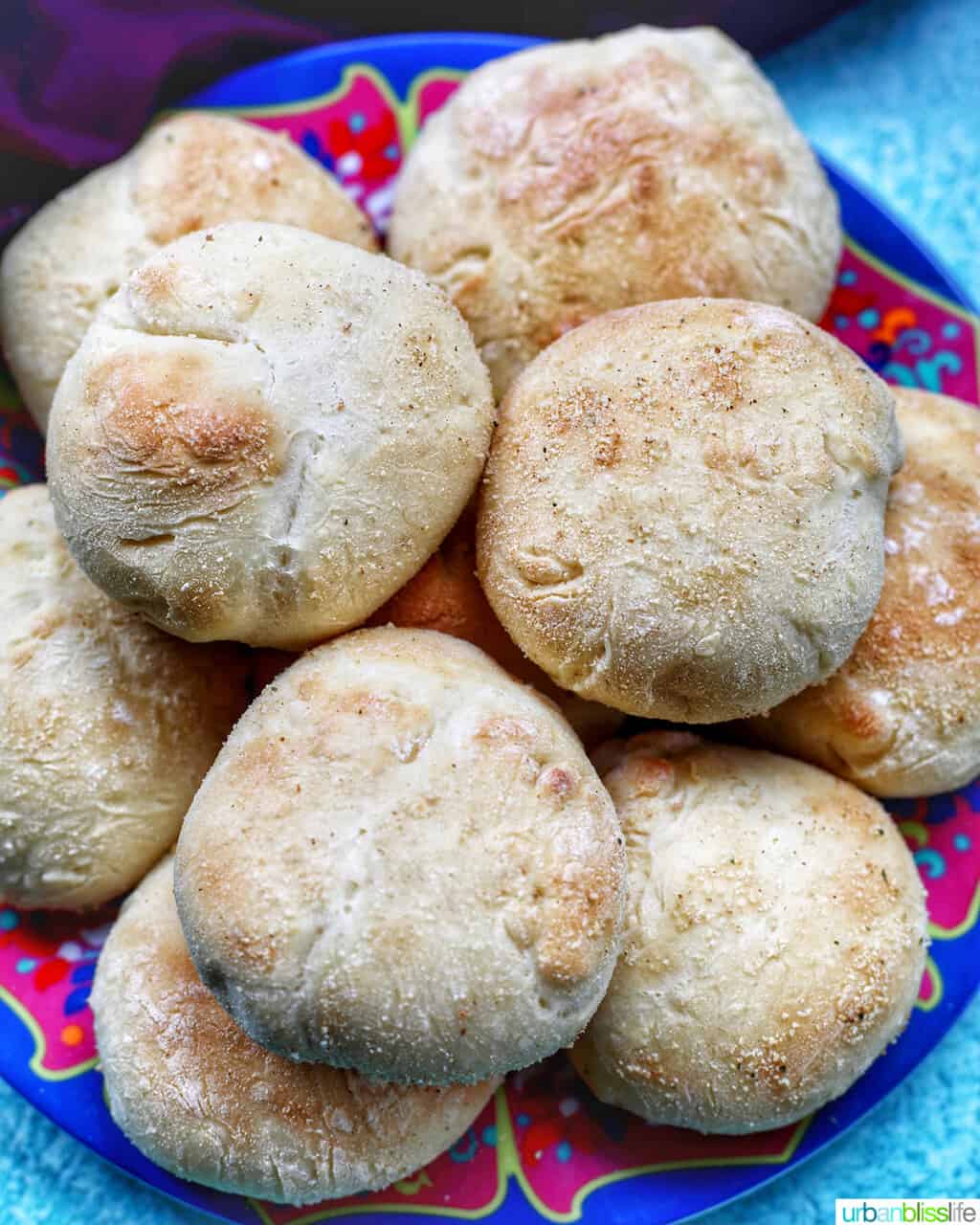
Pandesal is the bread of my youth. I used to love it when my mom would come home with a package of pandesal from the little Asian corner market.
These light, fluffy, airy little rolls are the most popular and widely made bread in the Philippines. While my mom and Lola (great-grandmother) were amazing cooks, and cooked up fresh lumpia, pancit, and adobo regularly, I don't remember growing up with a whole lot of baking from scratch in my house.
Bread in my house was usually store-bought pandesal or King's Hawaiian Rolls, which are similar shape and sweetness as pandesal. So I was happy to learn in recent years just how easy it is to make pandesal from scratch at home!
Jump to:
What is pandesal?
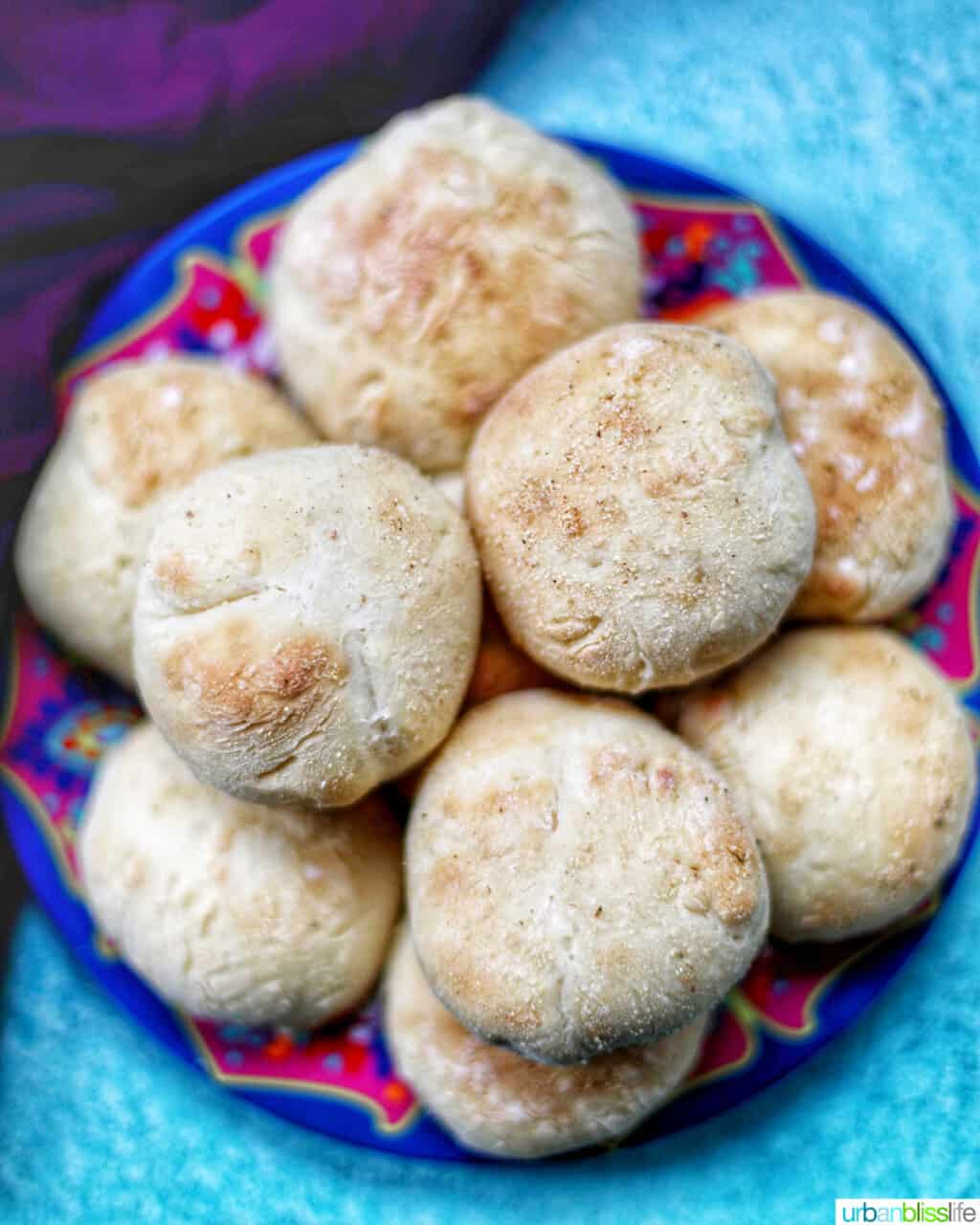
Pandesal is a traditional bread popular in the Philippines. The term "pandesal" means "salt bread" in Spanish, and its beginnings are linked back to 16th century Spanish colonization.
Everybody eats pandesal in the Philippines. Young, old, rich, poor; it's a universally appreciated food that most Filipinos enjoy early in the morning. But you can also enjoy pandesal as part of your mid-morning or mid-afternoon snack, or merienda.
I have strong food memories of my Lola creating little sandwiches with Spam and eggs in pandesal. SO. GOOD. And when I make this recipe at home now, it brings back all of those warm memories of my Lola.
Ingredient notes
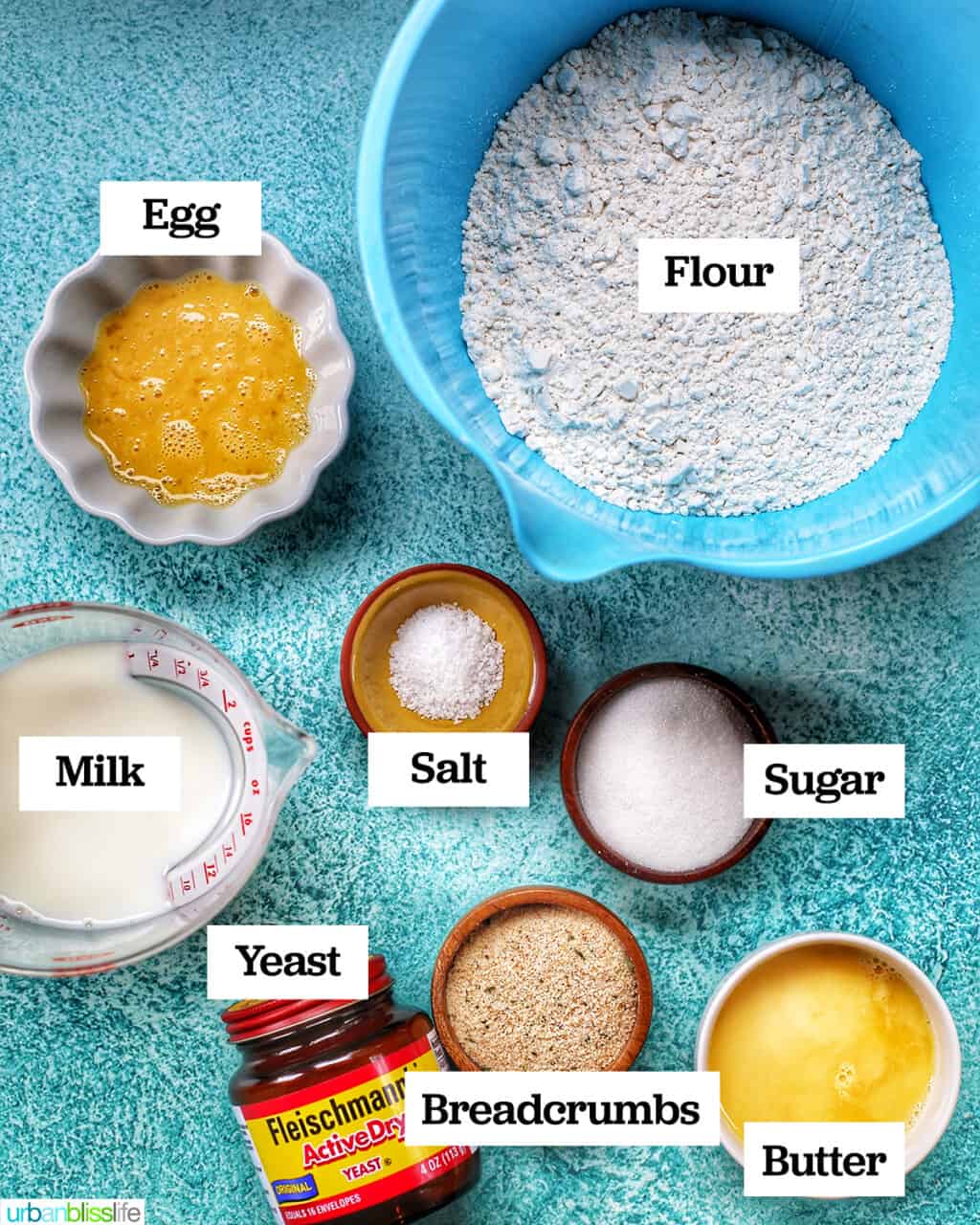
To make pandesal at home, you need less than 10 ingredients. And all of these ingredients are fairly common, so you probably already have them in your pantry and fridge!
Active Dry Yeast - you'll want to activate the yeast in ¼ cup of warm milk first since that takes a few minutes. If you're using Instant Yeast, you don't need to activate it in this way and can add it to the dry mixture on its own.
Milk - I use 1% milk, but you can use 1%, 2%, or Whole Milk. You'll need to microwave the milk for 30 seconds and then use ¼ cup to activate the yeast and then you'll use the remaining ¾ cup warm milk for the main dough.
Flour - I use all-purpose flour, but some people use a blend of all-purpose flour and bread flour. I prefer the fluffiness that you get with using just AP flour.
Salt - use kosher salt. If you are using any other type of salt, be sure to adjust your measurements accordingly.
Sugar - granulated sugar adds a nice touch of sweetness without being too overpowering.
Eggs - let your eggs sit out for about 20-30 minutes before incorporating them into the dough. Room temperature eggs tend to mix more thoroughly and smoothly than refrigerator-cold eggs. I use cage-free organic large brown eggs.
Butter - use unsalted butter, melted and then cooled slightly before mixing it in.
Breadcrumbs - you'll roll the dough in breadcrumbs just before putting them in the oven. This gives the rolls that classic pandesal outer texture. Plain breadcrumbs are preferred, but I've used Italian breadcrumbs in a pinch when I didn't have plain breadcrumbs on hand and they tasted just as delicious!
Step-by-step instructions
Place the milk in a microwave-safe bowl and microwave for 30 seconds. Set aside ¾ cup of the milk (you’ll use it soon) and pour the remaining ¼ cup into a separate bowl or cup and add the active dry yeast. Allow the yeast to sit in the warm milk for 10 minutes, then stir.
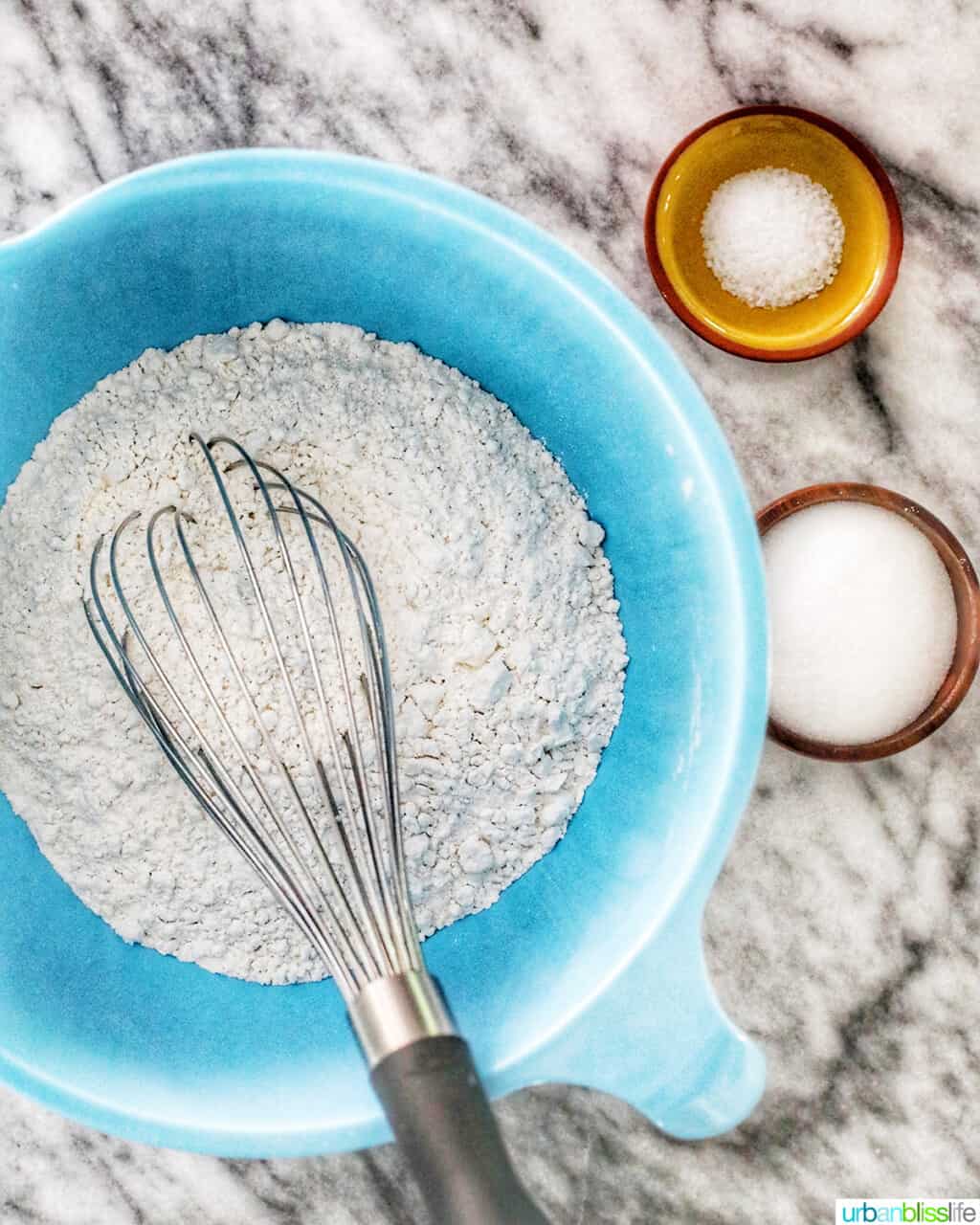
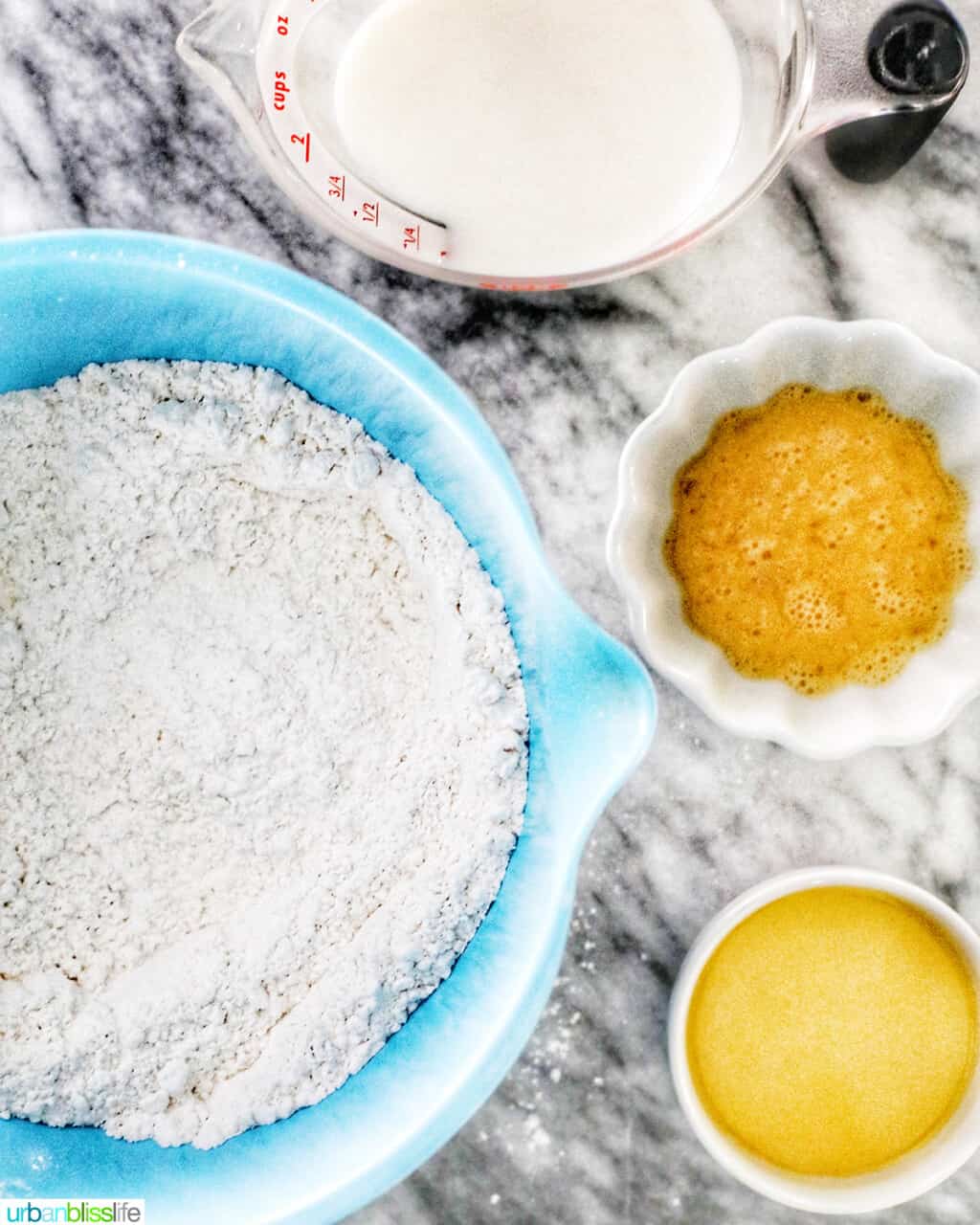
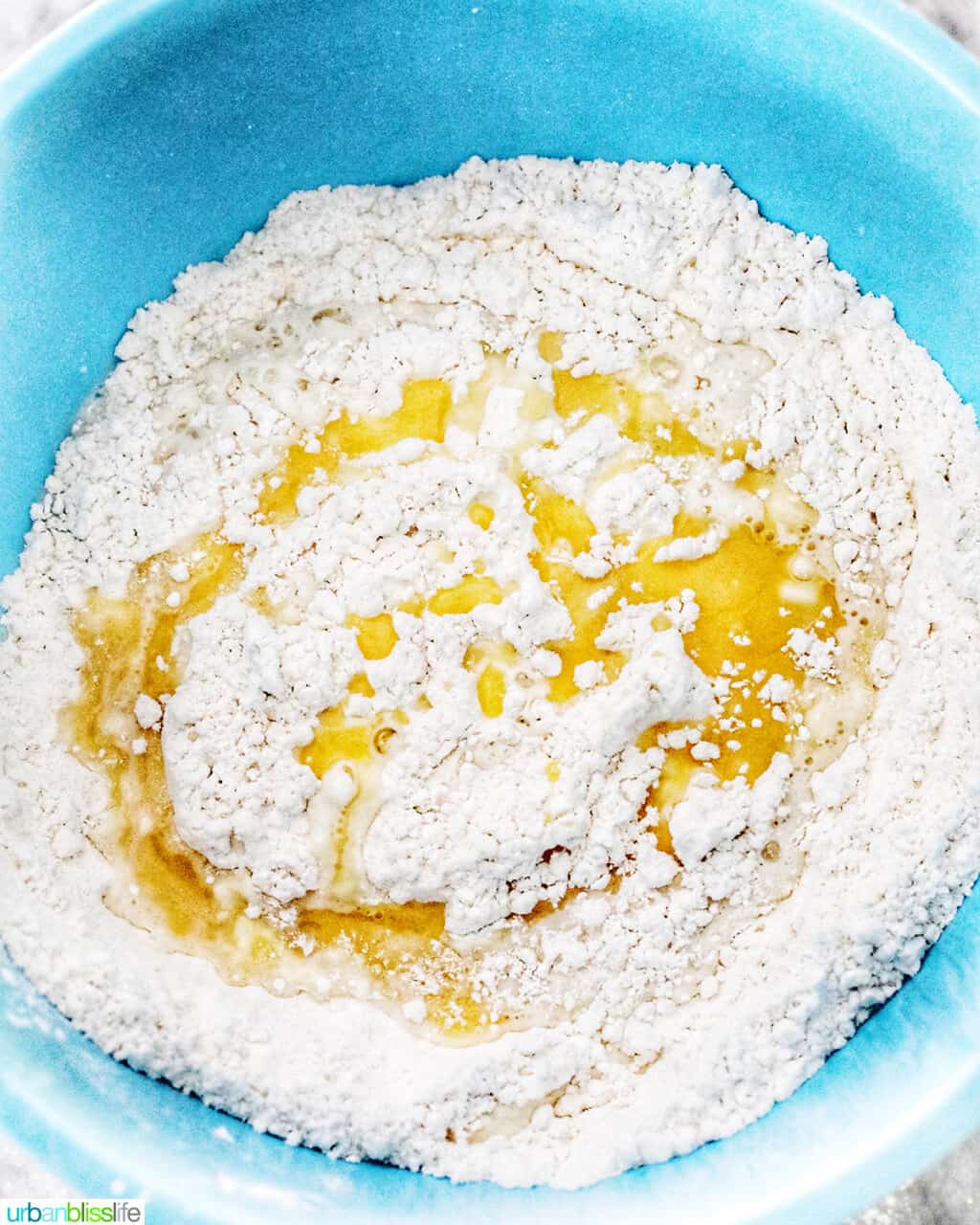
While the yeast is activating, in a large bowl, whisk together the flour, sugar, and salt.
With a wooden spoon or a heatproof silicone spatula, fold in the ¾ cup milk, egg, and melted butter in with the dry ingredients, stirring and folding the ingredients together gently just until well blended.

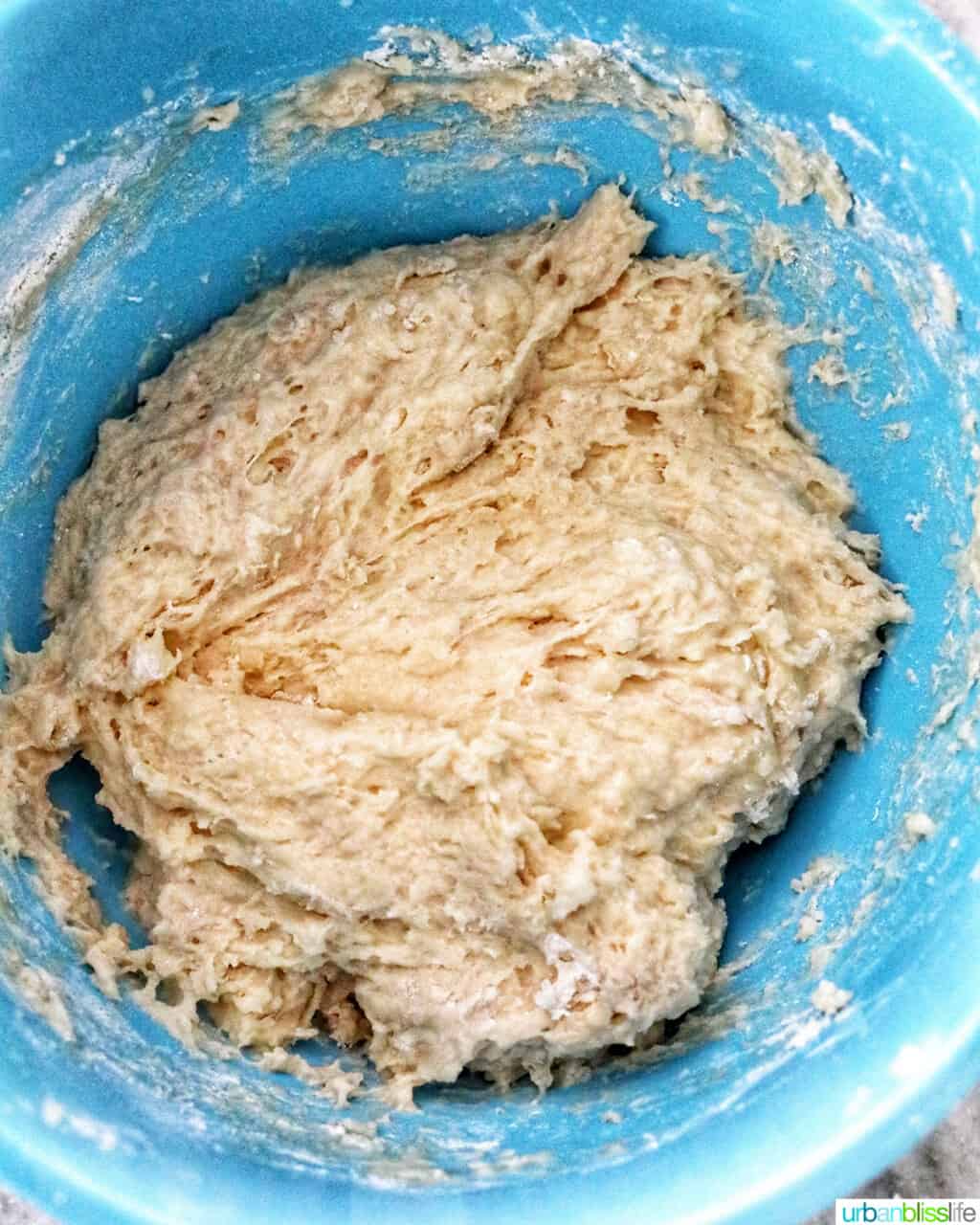
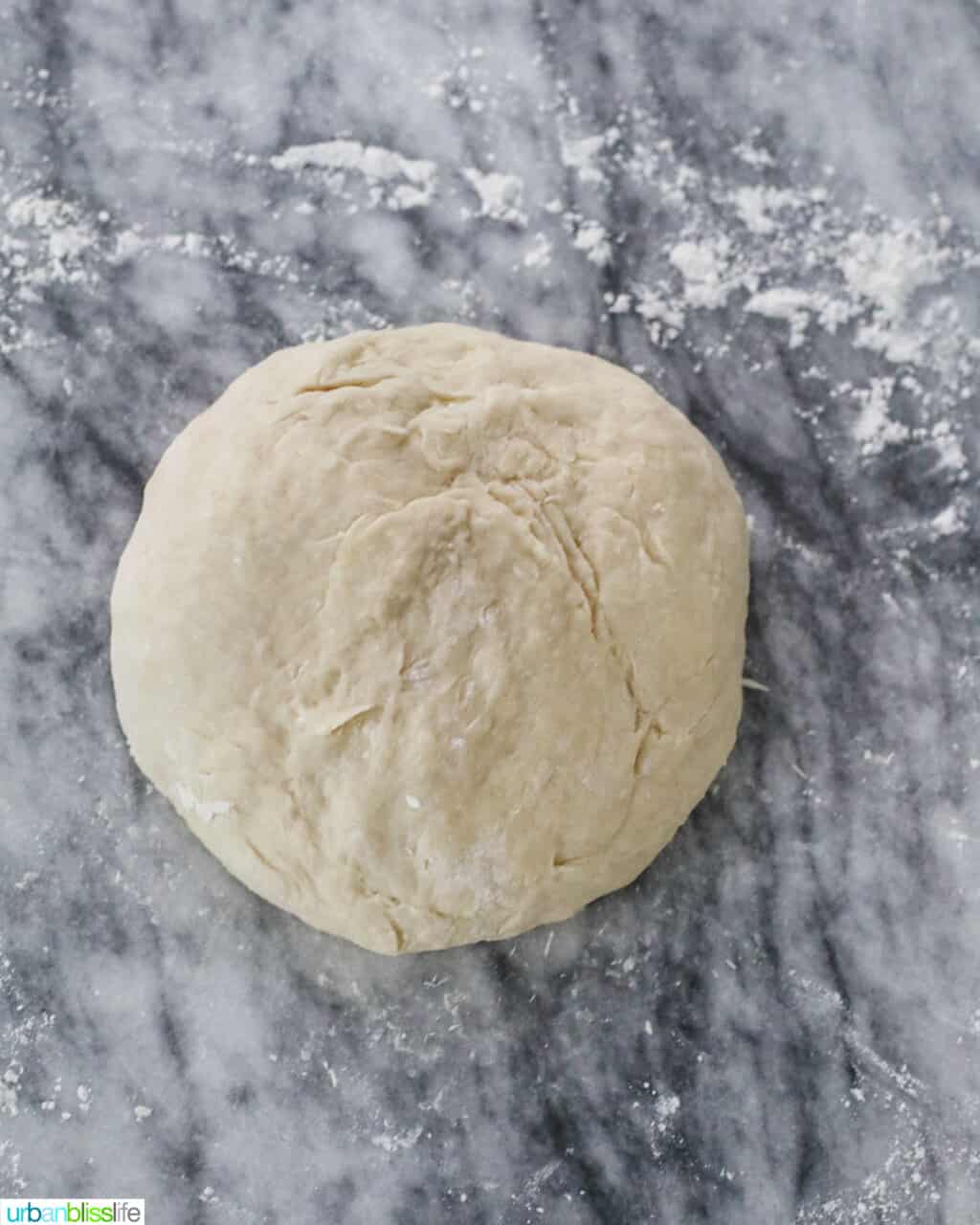
At this point, if 10 minutes has passed, the yeast should be activated. Give it a stir and fold the yeast/milk mixture into the dough.
Turn the dough out onto a lightly floured surface and knead it just until the dough starts to feel well combined, about 3 to 5 minutes. Form the dough into a ball.
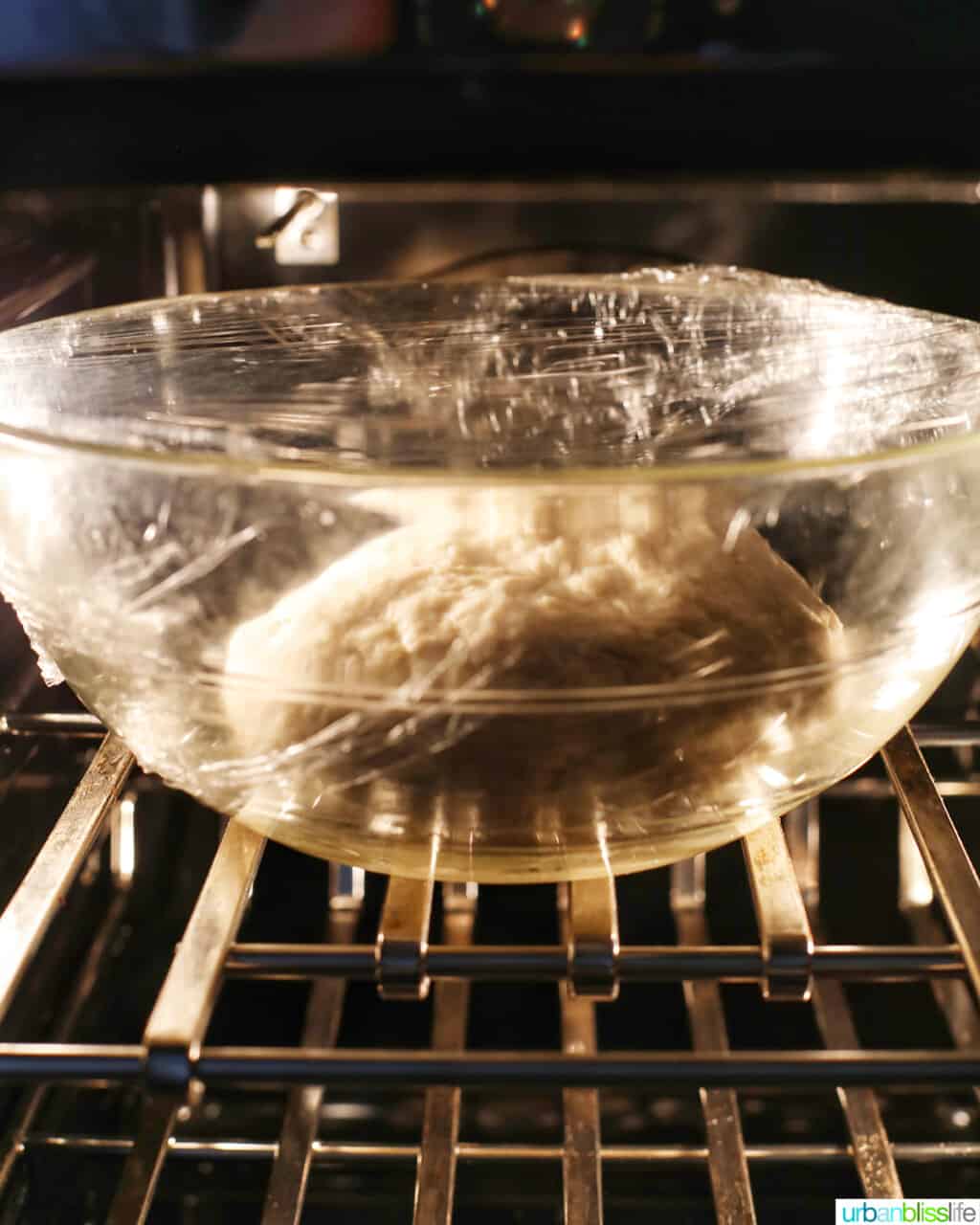
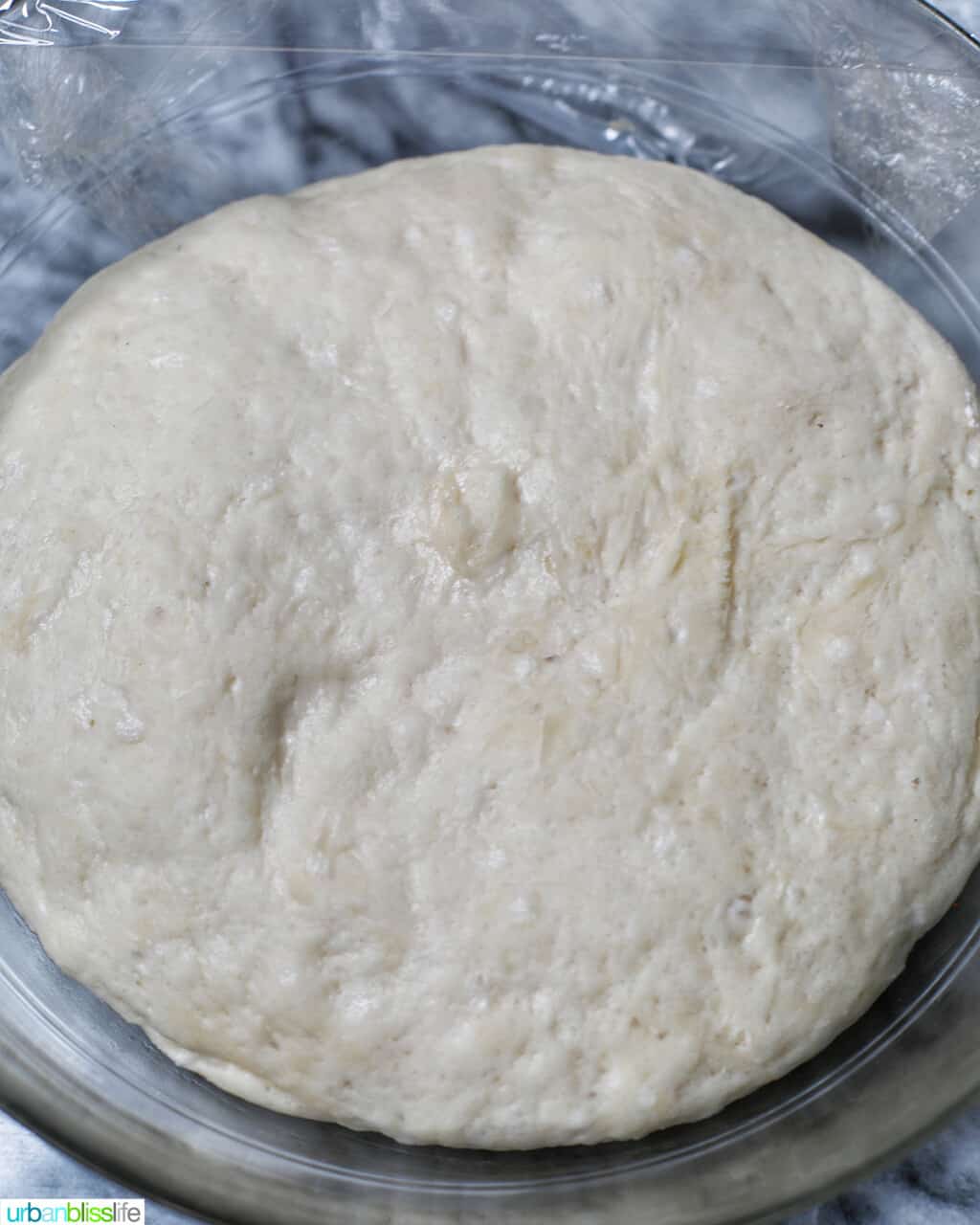
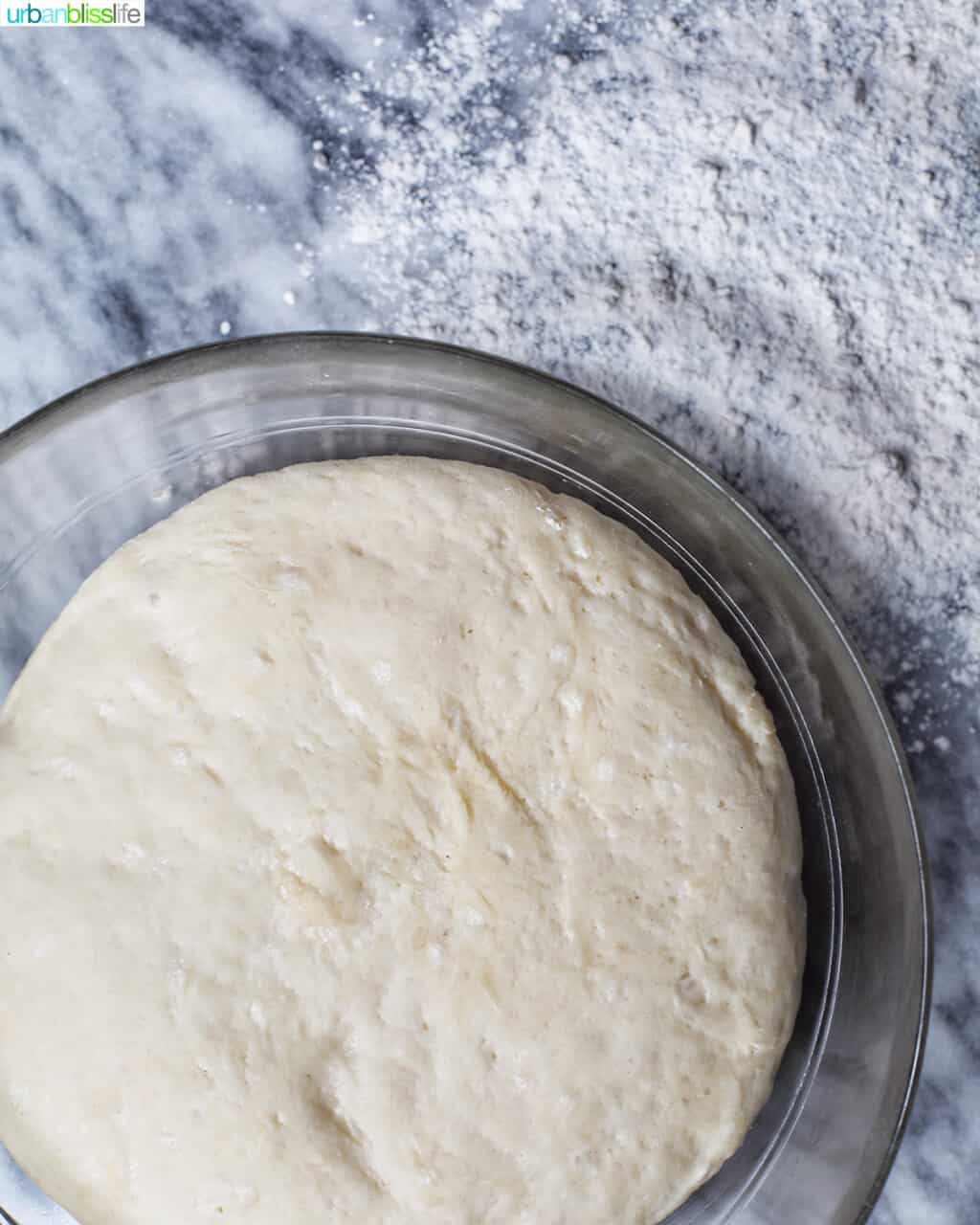
Lightly coat a large glass bowl with olive oil, then place the dough in the bowl. Cover with plastic wrap or a kitchen towel and either proof in your oven or place in a warm spot in your kitchen. Allow the dough to rise until it reaches about double in size, which can take anywhere from 45 minutes to 1 hour and a half.
While the dough is rising, line a baking sheet with parchment paper and set aside.
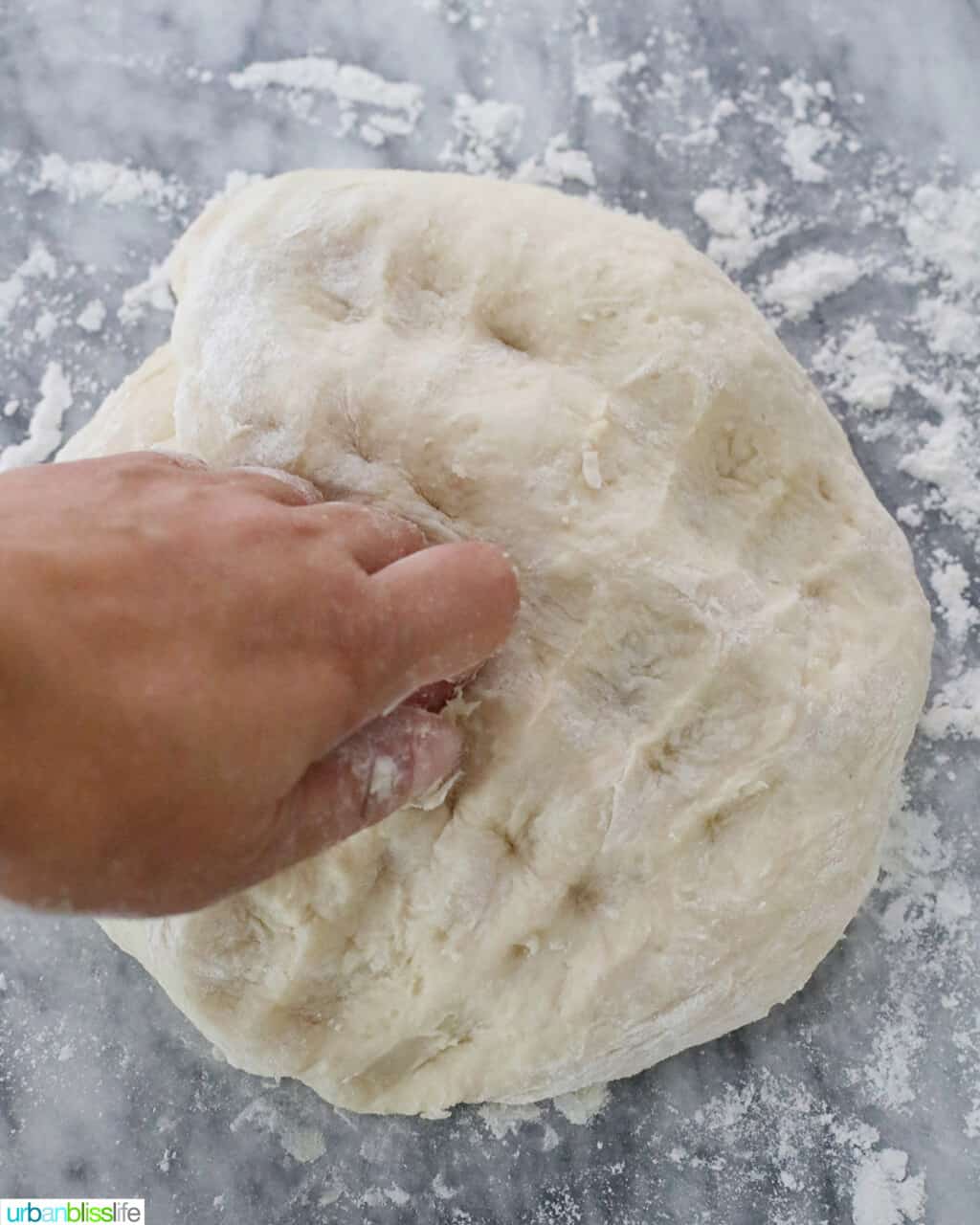
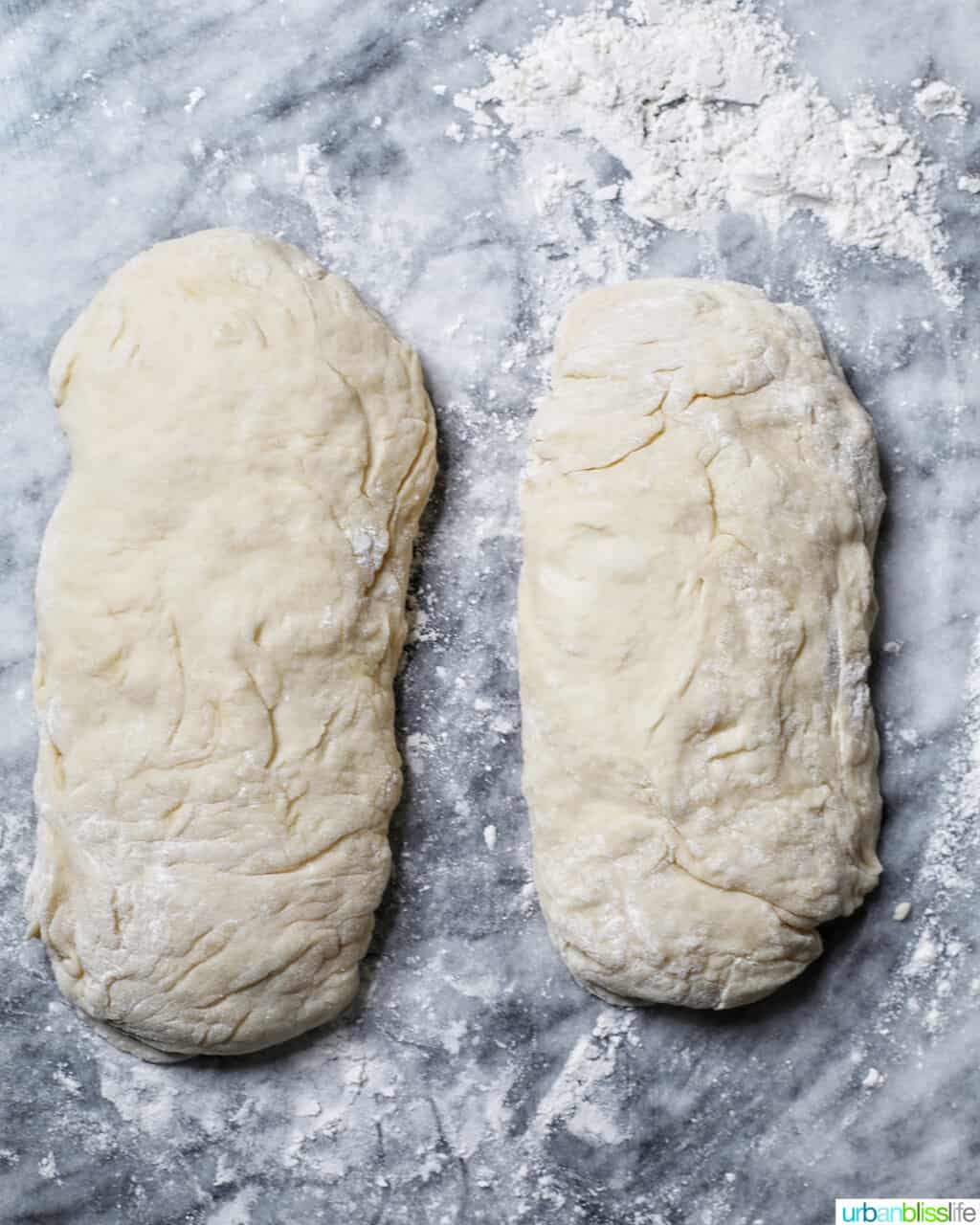
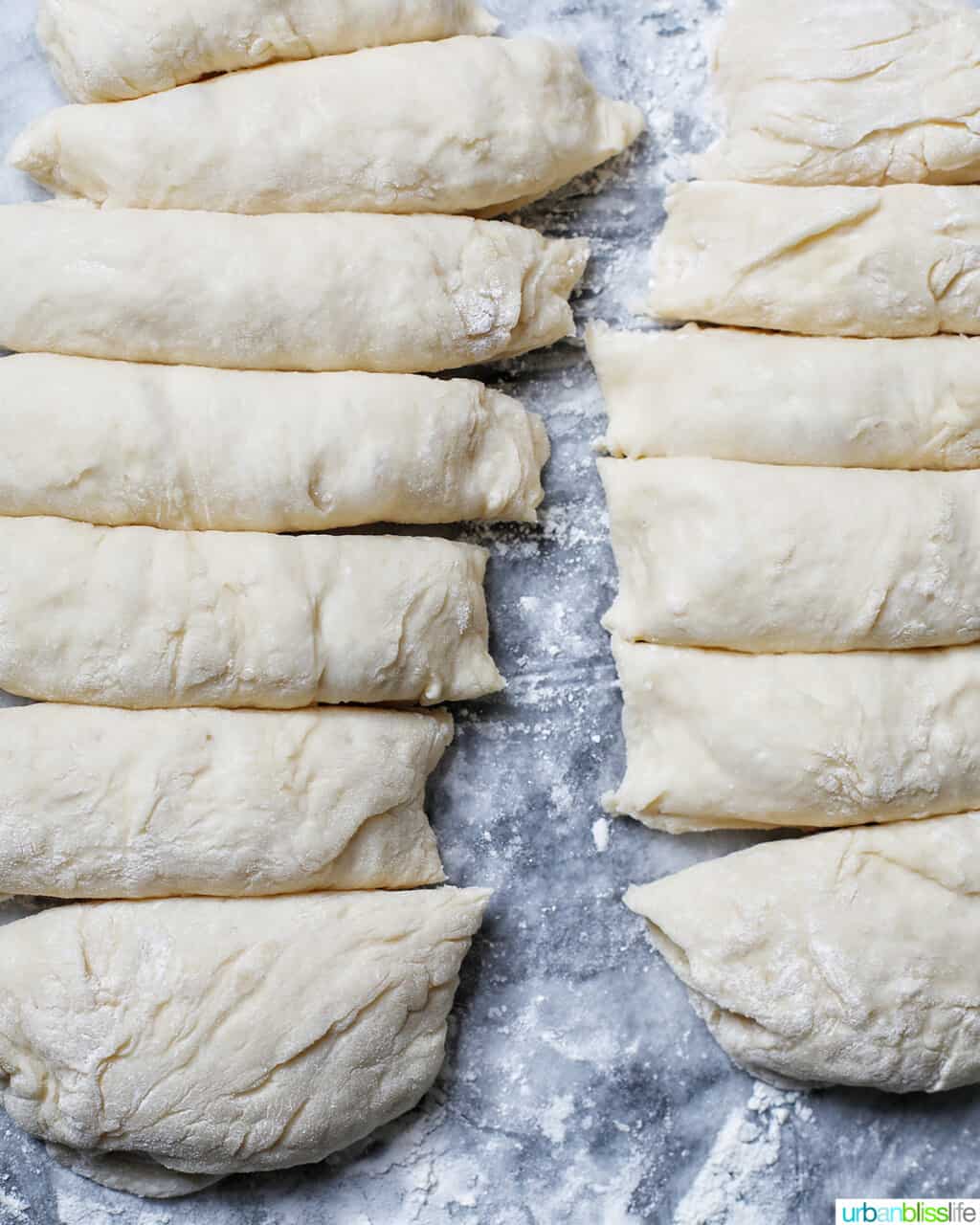
Once the dough has doubled in size, remove it from the bowl and divide into 2 equal parts. Roll each half into a log. Then slice each log into 6 even pieces, for a total of 12 pieces.
Roll each dough piece into a ball. Then immediately roll each ball in the breadcrumbs.
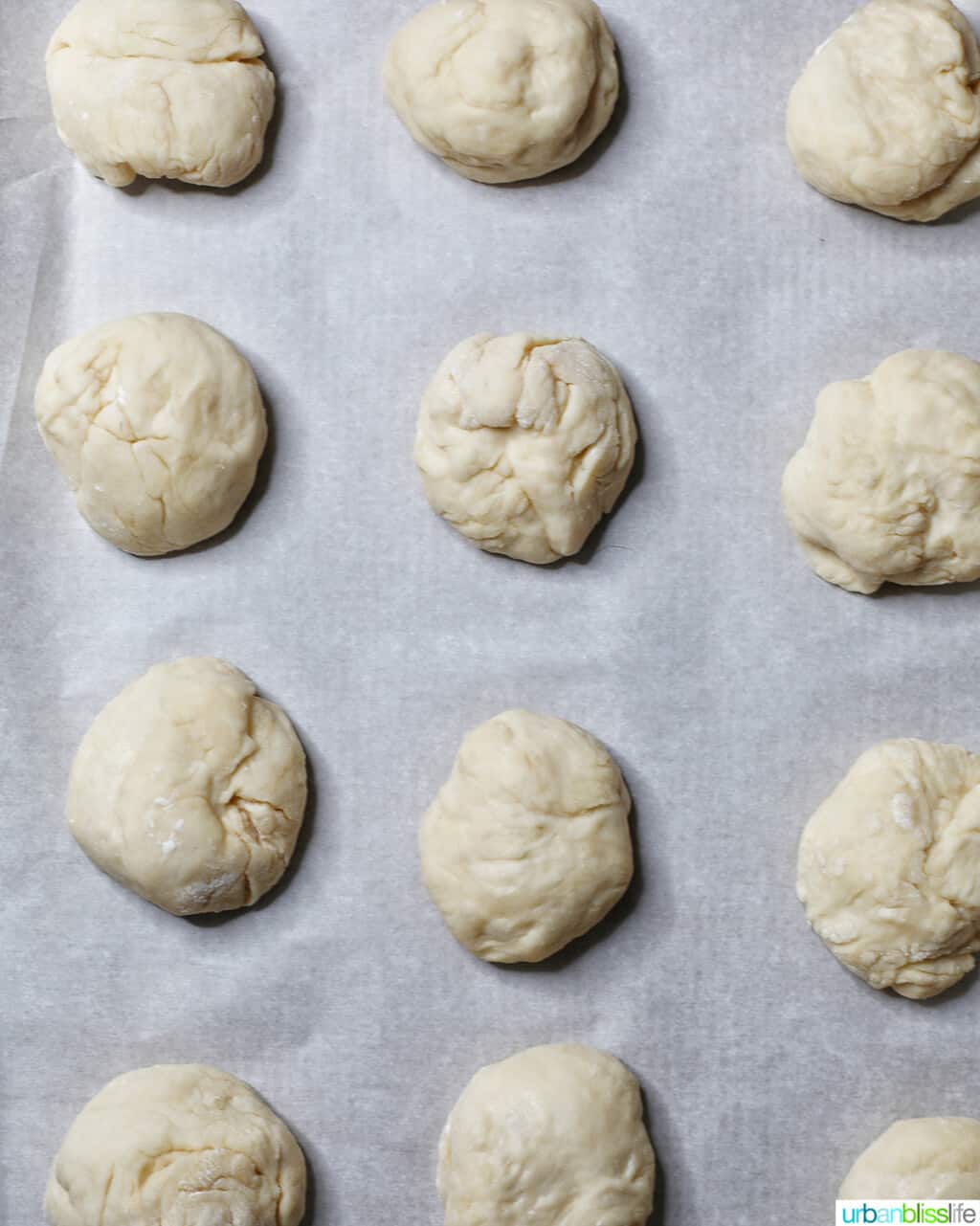

Place dough balls on the prepared baking sheet approximately 2 inches apart to allow the dough to double in size again for a second proof. Lightly cover the pan with a kitchen towel or plastic wrap and allow for the dough to rise for the second proof, just about 15 minutes.
Preheat your oven to 375°F. Bake for 15 minutes, just until the tops and sides of the pandesal reach a light golden brown. Remove from the oven and serve immediately.
Recipe FAQs
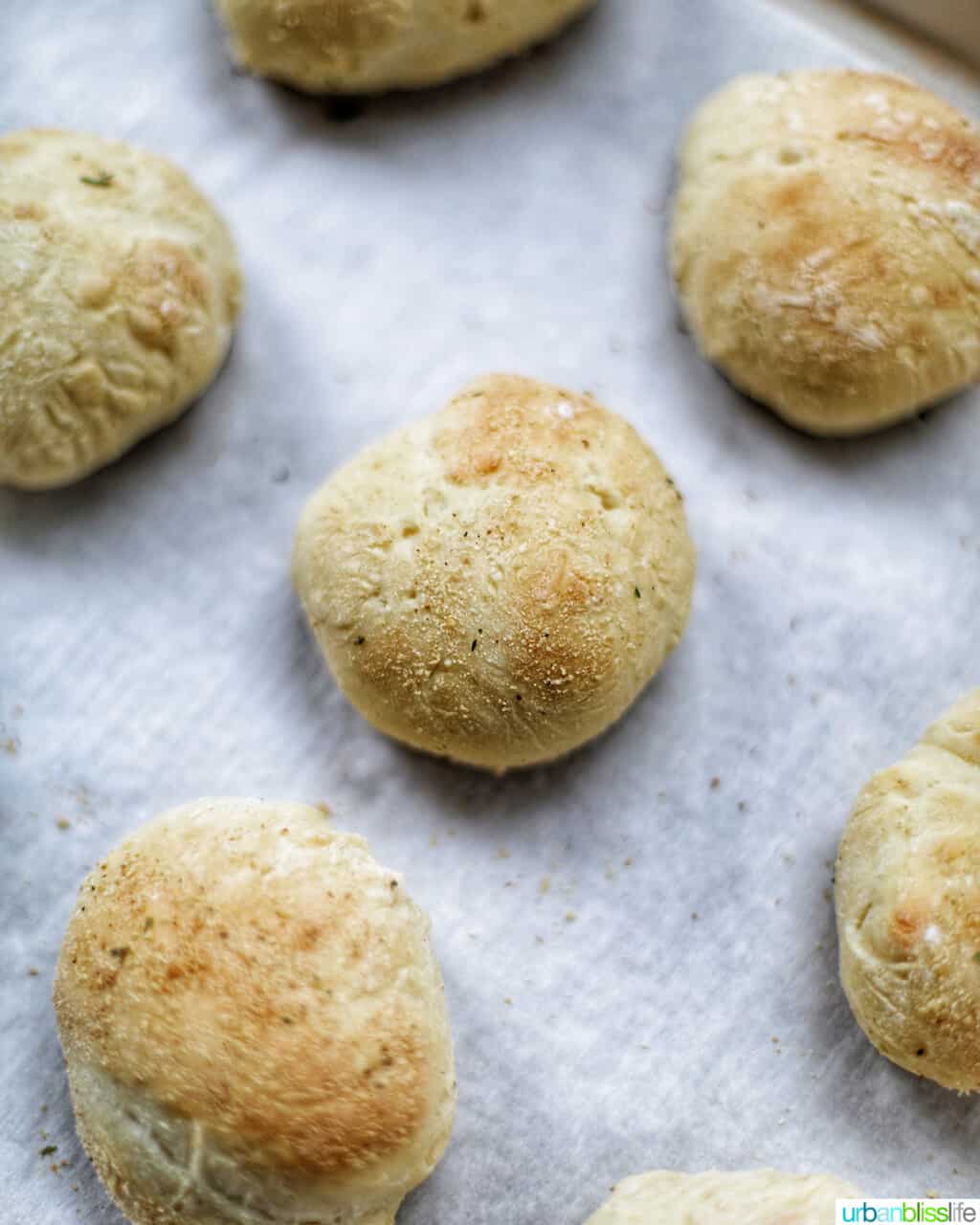
You might notice that the ones I made for this recipe photoshoot are rounder than traditional Filipino pandesal. I simply decided not to squish them together to give them ample even baking room. Traditional pandesal often is baked closer together to give them that squished together square roll look, similar to King's Hawaiian Rolls. Either way, the taste is the same: delicious!
Pandesal is best eaten hot from the oven. However, you can store pandesal in an airtight container at room temperature for up to 2 to 3 days. To reheat, simply microwave for 30 seconds.
Yes! After baking, allow the pandesal to cool to room temperature. Then store in an airtight, freezer-safe container or airtight freezer bags in the freezer for up to one month.
Serving ideas




Pandesal is best enjoyed on its own, with a pat of unsalted butter or dipped into your morning coffee.
But it's also great as a sandwich vessel! Especially with traditional Spam and fried or scrambled eggs.
Of course, no one will scold you if you enjoy this Filipino bread as a side dish with lunch or dinner. Especially if you enjoy it with one of these Filipino main dishes.
For more, you can buy my Filipino cookbook: Modern Filipino Cooking, my 55-page e-Book with authentic Filipino recipes that I've adapted for today's modern kitchen!

Did you make this recipe? Don't forget to leave a 5-Star 🌟🌟🌟🌟🌟 rating in the recipe card, and if you really loved it, please leave a comment further down on the page. Thank you!
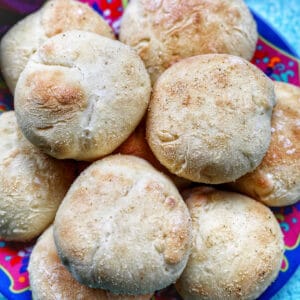
Filipino Pandesal
Ingredients
- 1 cup milk divided
- 1 package active dry yeast
- 3 cups all-purpose flour plus more for floured surface
- ¼ cup granulated sugar
- 1 teaspoon kosher salt
- 1 egg slightly beaten
- 2 tablespoon unsalted butter melted and slightly cooled
- 1 Tablespoon olive oil
- ¼ cup breadcrumbs
Instructions
PREP INGREDIENTS
- Place the milk in a microwave-safe bowl and microwave for 30 seconds. Set aside ¾ cup of the milk (you’ll use it soon) and pour the remaining ¼ cup into a separate bowl or cup and add the active dry yeast. Allow the yeast to sit in the warm milk for 10 minutes, then stir.
MAKE THE DOUGH
- While the yeast is activating, in a large bowl, whisk together the flour, sugar, and salt.
- With a wooden spoon or a heatproof silicone spatula, fold in the ¾ cup milk, egg, and melted butter in with the dry ingredients, stirring and folding the ingredients together gently just until well blended.
- At this point, if 10 minutes has passed, the yeast should be activated. Give it a stir and fold the yeast/milk mixture into the dough.
- Turn the dough out onto a lightly floured surface and knead it just until the dough starts to feel well combined, about 3 to 5 minutes. Form the dough into a ball.
PROOF THE DOUGH
- Lightly coat a large glass bowl with olive oil, then place the dough in the bowl. Cover with plastic wrap or a kitchen towel and either proof in your oven or place in a warm spot in your kitchen. Allow the dough to rise until it reaches about double in size, which can take anywhere from 45 minutes to 1 hour and a half.
- While the dough is rising, line a baking sheet with parchment paper and set aside.
SHAPE THE ROLLS + SECOND PROOF
- Once the dough has doubled in size, remove it from the bowl and divide into 2 equal parts. Roll each half into a log. Then slice each log into 6 even pieces, for a total of 12 pieces.
- Place breadcrumbs in a shallow bowl. Roll each dough piece into a ball. Then immediately roll each ball in the breadcrumbs.
- Place dough balls on the prepared baking sheet approximately 2 inches apart to allow the dough to double in size again for a second proof. Lightly cover the pan with a kitchen towel or plastic wrap and allow for the dough to rise for the second proof, just about 15 minutes.
BAKE
- Preheat your oven to 375°F. Bake for 15 minutes, just until the tops and sides of the pandesal reach a light golden brown. Remove from the oven and serve immediately.
Video
Notes
Nutrition
Nutrition information is a general estimate. Actual nutrition details may vary depending on the exact foods & brands you use to make this recipe. It does not take into account any substitutions, toppings, or optional ingredients.
Pin it:
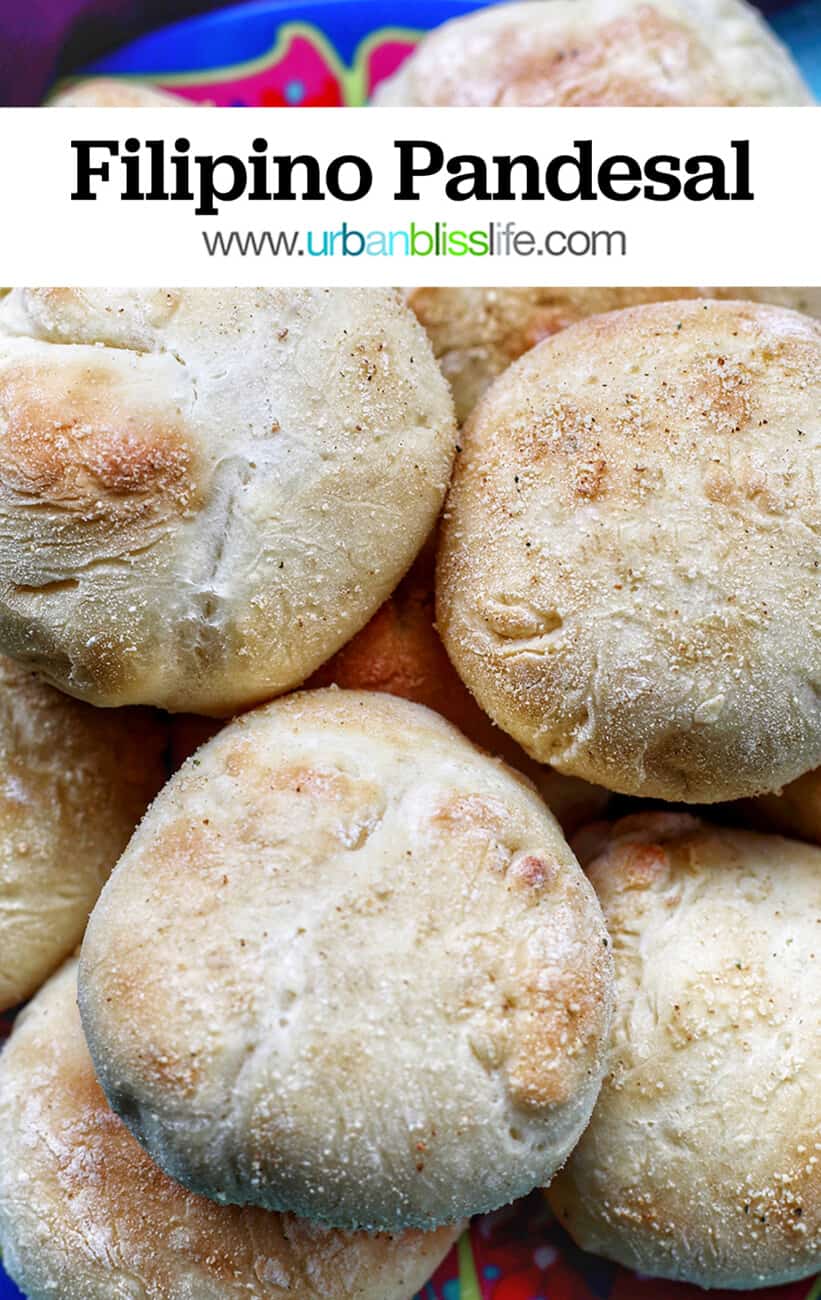


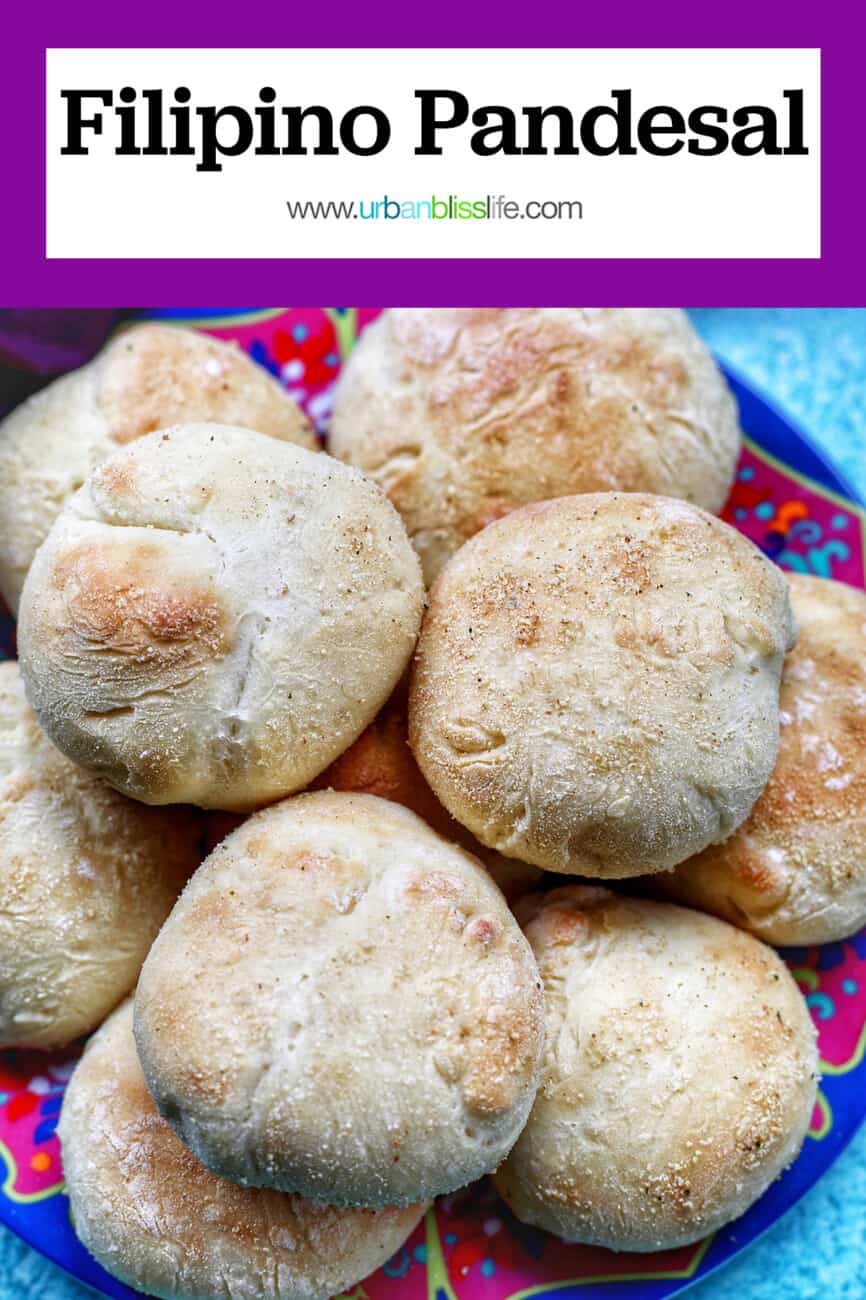
Toni says
This was so good! It turned out really amazing!
Lima Ekram says
Something new! Cant wait to try it!
Dannii says
I haven't heard of this bread before, but it looks delicious. I can't wait to try.
Carrie Robinson says
I have never heard of this bread before, but now I want to totally try this! Looks so good. :)
angela says
I am still baking a lot of fresh bread even in year two of the pandemic. I am happy to try a new recipe and this was recommended by a coworker to try. Thank you so much for a great recipe and yes hot out of the oven is best.